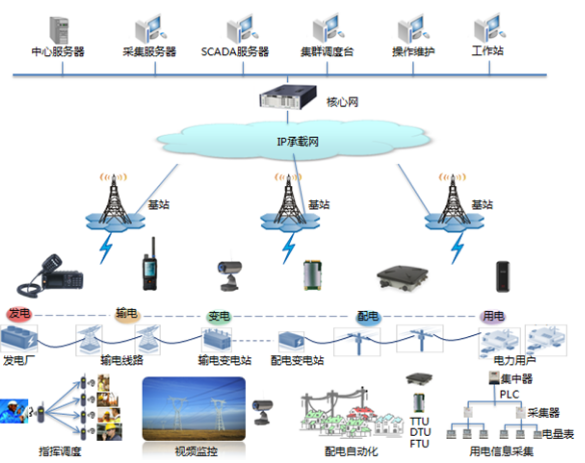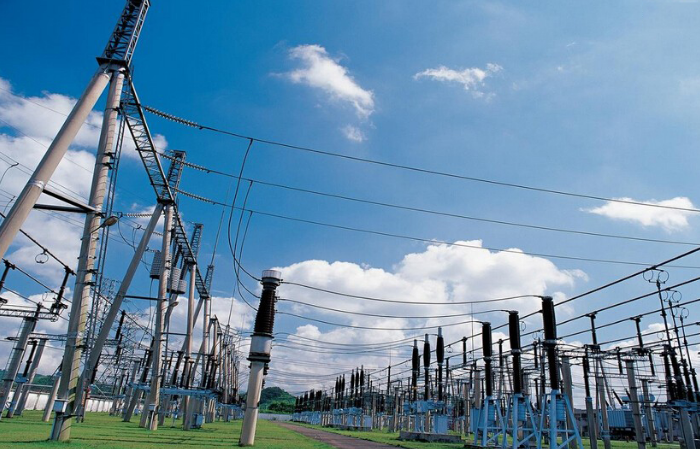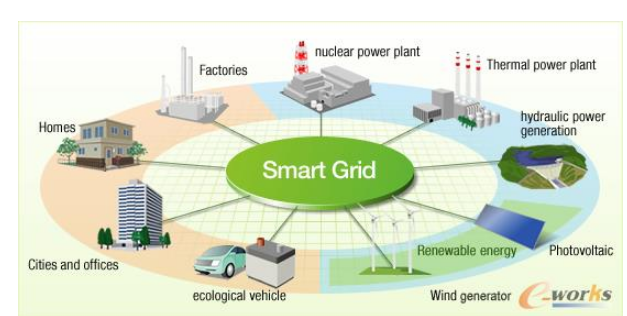Analysis of influencing factors (1) Policy support The smart grid integrates and integrates many advanced technologies such as communication technology, computer technology, sensing measurement technology and control technology with the original power grid facilities to form a new type of power grid, which represents the development trend of the future power grid. As far as the transmission link is concerned, the State Grid Corporation of China stated in the "State Grid Intelligent Planning General Report": comprehensively implement the state maintenance and life cycle management of transmission lines, and construct a centralized monitoring center for power transmission and transformation equipment to realize UHV lines, Centralized real-time monitoring and disaster warning of environmental parameters and operational status parameters of important transmission corridors, large spans, and disaster-prone areas. As far as the substation is concerned, the State Grid Corporation of China has made the substation condition monitoring system construction an important part of the intelligent substation in the National Grid Intelligent Planning Report. The intelligent substation realizes on-line monitoring of main equipment such as transformer oil chromatography, partial discharge of combined electric appliances, full current of arrester and its important parameters through the condition monitoring unit, providing basic data support for grid equipment management. In July 2016, the construction of smart grid was once again included in the major project of the “13th Five-Year National Science and Technology Innovation Planâ€. The plan proposes: focusing on the deployment of large-scale renewable energy grid-connected regulation, flexible interconnection of large power grids, multi-user supply and demand interactive power, smart grid basic support technology and other key tasks to achieve comprehensive localization of smart grid technology equipment and systems, and upgrade of power equipment Global market share. In December 2016, the National Development and Reform Commission and the Energy Bureau jointly issued the “13th Five-Year Plan for Power Development (2016-2020)â€. The plan proposes: promoting the construction of “Internet +†smart grid, comprehensively improving the intelligence level of the power system; building a comprehensive substation in an all-round way, promoting the application of online monitoring, state diagnosis, intelligent inspection system, and establishing grids for mountain fires, ice disasters, and typhoons And other safety early warning systems for natural disasters. In February 2017, the Energy Bureau issued the “Guidelines for Energy Work in 2017â€. The opinion puts forward: It is necessary to formulate and implement the “Implementation Opinions on Promoting the Construction of Efficient Intelligent Power Systemâ€, and formulate specific work plans for each province (autonomous region and city); study and formulate the “Smart Grid 2030 Strategy†to promote the establishment of a smart grid development strategy system. With the continuous deepening of smart grid construction, the power transmission and transformation monitoring industry, which is the basis of intelligence, will usher in a new round of development opportunities. (2) The communication demand is getting stronger and stronger In recent years, China's communication business has shown geometric growth, and the demand for power communication has become increasingly strong. The construction of smart grids puts higher demands on the carrying capacity of power communication. Smart grid construction is inseparable from power communication. With the rapid development of Internet technology, the Internet of Things is taking root in various industries of society. As a power industry that once had a strong communication technology foundation, it is at the forefront of various industries. In terms of power consumption information collection, in the past, meter reading often required grid employees to go through house manual meter reading, which has high labor intensity, low efficiency, and is prone to problems such as wrong copying and missing copying. Nowadays, with the advent of smart meters, remote meter reading, online recharge and remote settlement have become new models, which greatly reduces the workload of grassroots employees and improves the efficiency and accuracy of the collection of electricity information. Smart meters greatly facilitate the use of electricity information collection, but the effective operation of smart meters requires a strong, wide coverage of the power communication network support. With the rapid development of smart grid construction, the State Grid will build the largest international electricity information collection system to achieve full coverage of 395 million households. By then, a large amount of data transmission will depend on the power communication network. In addition, the demand for power communication in the user-side demand response field is also growing. With the deepening of the construction of smart grids, in order to effectively stabilize the peak-to-valley difference of power grid load, household appliances such as air conditioners and water heaters in the future can be connected to the power communication network, and start and stop according to the real-time load of the grid. (3) Intelligent inspection robot The intelligent inspection robot belongs to the emerging sub-sector of the power transmission and transformation monitoring industry. Its basic function is the mobile monitoring platform. It is a new type of monitoring equipment that combines detection technology and robot technology. It can realize power equipment in substations, open and close places. Conductive monitoring is generated and promoted based on the needs of smart grid construction. In the smart grid construction layout, actively using intelligent technologies such as robots to develop intelligent operations, improve the efficiency of the power industry, improve power supply reliability, and reduce costs have become an important part of smart grid construction. The application scenarios of intelligent inspection robots in the power industry include grid-related substations, converter stations, substations, and power plant substation sites. Due to the uneven development of the region, the transformation of smart grids usually has piloted and gradually popularized in the region, and then it is promoted to different regions and promoted throughout the country. The application of intelligent inspection robots is no exception. Zhejiang Province is the earliest pilot substation in the State Grid System. The popularization of intelligent inspection robots is in the forefront of the country. With the successful demonstration and application of intelligent inspection robots in Zhejiang Province, other provinces Promotion has also begun to expand. (4) The development of big data technology promotes the development of smart grid In terms of power generation, big data technology can integrate the power demand within the society, and can predict the power load for a period of time. The power generation field carries out step-by-step and strategic intermittent power generation based on information reports, which is conducive to the construction of ecological civilization. In terms of power transmission, big data technology can comprehensively collect and process all kinds of information in transmission lines, ensure the normal operation of transmission lines, minimize the damage rate of power grids, and facilitate the completion of smart grids. In terms of electricity consumption, through the big data technology to sort out and analyze the electricity demand of the majority of power users, combined with advanced power marketing strategies, consciously guide the concept of energy-saving electricity in the social sphere, and promote the "intensive" of the power industry. development of. (1) There are still technical problems in the smart grid that need to be solved Due to the imbalance of China's macroeconomic development, with the rapid growth of power demand, the difference in energy consumption between regions is gradually increasing. The distribution of power supply and demand in China has the following characteristics: in terms of energy, water is mainly distributed in the southwest, and coal is distributed in Shaanxi, Shanxi, and the “Three West†areas in western Inner Mongolia; the load is mainly concentrated in areas with high economic development levels in the eastern coastal areas. Therefore, the availability, non-discrimination and affordability of power supply, and the imbalance between the supply and demand of population and electricity in the region have brought enormous challenges to the construction of smart grids. In addition, in the future, there will be a large number of distributed clean energy power generation and other forms of power generation into the power grid, requiring flexible reconstruction of the distribution network, and optimization of the flow and clean energy acceptance. This is also a challenge for the technical requirements of the smart grid. . (2) Power reform has not been perfected, and power grid enterprises have a heavy burden Compared with other industries, the market-oriented reform of China's power industry started late. Due to historical reasons, China's power grid was a unified large power grid from the beginning, and natural monopoly is its basic attribute. Over the years, the power grid has played an important and irreplaceable role in economic and social development as a major infrastructure related to the national economy and people's livelihood. China's power grid is monopolized by state-owned enterprises. The price of electricity is determined by the state price department. The model of “financial subsidies to charge consumers†has a very obvious “quasi-public product†feature. Although the power grid has been separated from government and enterprises and the separation of plant and network, due to lack of market competition, there are still many problems in transmission, distribution and sales. At present, China's power system is undergoing reform. However, due to the imperfect power reform and the inadequate service mechanism, power grid enterprises have actually assumed more responsibility for serving the society, such as urban network reconstruction in backward areas, “village and village electrification†projects, and residents. Electric unpaid maintenance services, etc., so the burden is heavier, which is not conducive to the grid enterprises to achieve strong investment in the smart grid. Ningbo Autrends International Trade Co.,Ltd. , https://www.supervapebar.com

